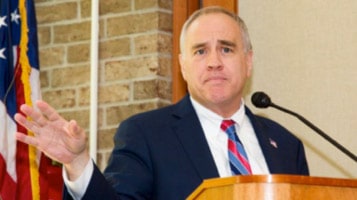At LIRPC meeting covered by Newsday, State Comptroller Thomas DiNapoli urged governments and schools districts to be conservative in drafting their budgets as a hedge against uncertain future economic conditions.
Full Article:
State comptroller urges LI governments to be fiscally conservative

By David Olson
State Comptroller Thomas DiNapoli Tuesday urged Long Island governments and school districts to be fiscally conservative in drafting their budgets amid economic uncertainty and the potential domino effects of changes in federal funding.
Addressing a meeting of the Long Island Regional Planning Council at Hofstra University, DiNapoli said there is reason for optimism, with robust private-sector job growth on the Island, a strong stock market and one of the healthiest state pension funds in the nation.
But, he reminded the council, few economists predicted the global financial crisis that began a decade ago.
“The reality is, we don’t really know where the economy is headed,” he said. “How sustainable is this recovery that we have? How much longer will it go? We can do our best guesses, but I’ve always said, we just need to be a little more conservative in our expectations.”
The congressional and Trump administration attempt to repeal the Affordable Care Act — also known as Obamacare — and replace it also could affect municipal and school district budgets, he said.
Gov. Andrew M. Cuomo said last week that the repeal and replacement of Obamacare that the House approved would slash $4.7 billion from the state’s Medicaid budget. The Senate is now considering the measure, which is believed to have little chance of surviving in its present form.
A large Medicaid cut would mean the state may need to reduce state funding for local projects and schools to make up for the loss in federal money, DiNapoli said.
The Trump administration’s budget blueprint — also highly unlikely to survive as is — proposes a $1.24 billion cut in New York State and local programs, presenting more risks to local budgets, he said.
On the other hand, Trump’s promise of a $1 trillion infrastructure program nationwide could, if enacted, be a boon to local governments, DiNapoli said.
Local governments face daunting infrastructure needs that could cost billions of dollars in the coming years, DiNapoli said. Over the next two decades, about $40 billion may be needed for repairs and improvements to drinking-water systems, DiNapoli said, alluding to a February report issued by his office.
Council member and Brookhaven Town Supervisor Edward P. Romaine said after the meeting that he agreed with DiNapoli’s call for fiscal conservatism and touted the town’s strong bond rating and its reserves as an indication of the town’s own fiscal caution.
Romaine said he backed the state property tax cap, which in its current form limits the growth in a government’s property tax levy to 2 percent or the rate of inflation, whichever is less.
But Romaine said the varying amounts for the cap each year — for the past four years, it has been well under 2 percent — make long-term budget planning difficult, and he called for a fixed number.


